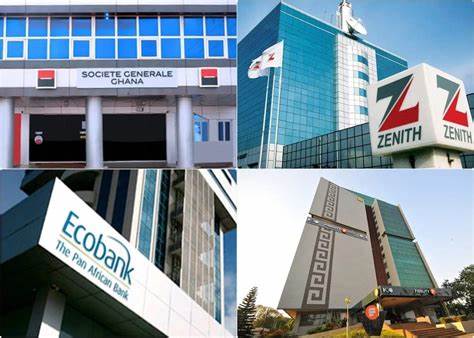Banks in Ghana wrote off a little above ¢768.29 million as bad debt in the first four months of 2022, about 5.5% increase over the same period last year.
According to the latest Monetary Policy report by the Bank of Ghana, the bad debt is made up of loan losses, depreciation, among others.
Despite the increase in the provision of the bad debt, the banking industry’s asset quality improved year-on-year, evidenced by the decline in the Non-Performing Loans (NPLs) ratio from 15.5% in April 2021 to 14.3% in April 2022.
The decline in the NPLs ratio was on the back of a higher growth in the stock of loans, from 7.0% to 25.8% during the review period.
When adjusted for the fully provisioned loan loss category, the industry’s adjusted NPL ratio also declined sharply from 6.5% to 4.2%.
On the other hand, the stock of NPLs, increased to ¢8.6 billion in April 2022, from ¢7.4 billion in April 2021, representing a growth of 15.8%.
The increase in the NPL stock indicates that some asset quality risks still remain within the banking sector.
Meanwhile, the extension of the loan repayment moratoria deadline by the Bank of Ghana to December 31st, 2022 is expected to provide relief to customers adversely impacted by the pandemic and help moderate the growth in non-performing loans within the banking sector.
All 3 sectors record improvements in NPL
In terms of sectorial performance, all but three sectors recorded improvements in their NPL ratios during the period under review.
These are electricity, water and gas (from 22.6% to 12.2%); manufacturing (from 18.3% to 10.9%); mining and quarrying (from 10.7 % to 6.5%); commerce and finance (from 21.9% to 18.9%) and the services sectors (from 9.1% to 8.7%).
On the other hand, the sectors that recorded increases in their NPL ratio were construction (from 24.0% to 32.1%); transportation, storage and communication (from 10.4% to 12.4%) and the agriculture, forestry and fishing sectors (from 23.7% to 25.0%).
The sector with the lowest NPL ratio was the mining and quarrying sector while the construction sector had the largest proportion of its loans impaired.
Latest Stories
-
These companies will raise prices because of Trump’s tariffs
28 minutes -
UNTWO election: PABF urges Africa to back UAE’s Al Nowais bid to be first Secretary-General
39 minutes -
Two in court over forged Judicial Service documents and stamps
40 minutes -
Black Stars could miss key players for 2025 Unity Cup – Dr Randy Abbey
8 hours -
Pyramids grab late equaliser in African Champions League final
10 hours -
EU calls for ‘respect’ after Trump threatens 50% tariffs
10 hours -
Ronaldo ‘could play’ in Club World Cup – Infantino
10 hours -
Amorim tells Garnacho he can leave Man Utd
10 hours -
Djokovic makes more history with 100th singles title
10 hours -
Ten Hag set to replace Alonso as Leverkusen manager
10 hours -
Salis’ Sunderland secure Premier League return
10 hours -
Assin Fosu chiefs and elders bless TGMA Unsung Artiste of The Year, Yaw Darling
11 hours -
Middle-aged, 2 children trapped in their home after a fig tree sealed their frontage doors
11 hours -
Roots of resistance: The climate cost of cutting Accra’s trees
11 hours -
Reimagining Informality: Harnessing the Urban potential of street vending in Ghana
12 hours

